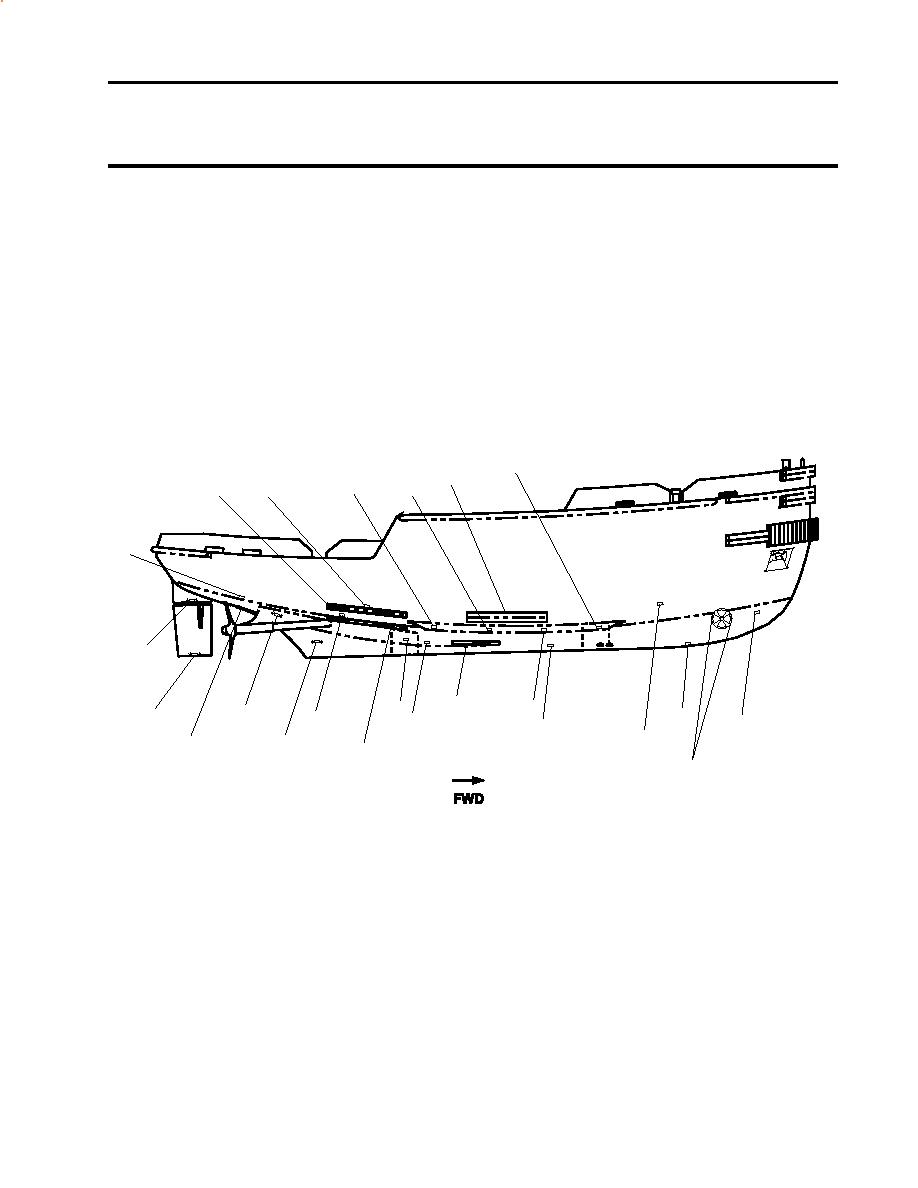
| Tweet |

Custom Search
|
|

|
||
 TM 55-1925-273-10-1
OPERATOR'S MANUAL
INLAND AND COASTAL LARGE TUG (LT)
THEORY OF OPERATION
CATHODIC PROTECTION SYSTEM
GENERAL
Galvanic corrosion is one common form of corrosion in marine environments. It occurs when two dissimilar metals are
brought into electrical contact under water. When a galvanic couple form, one of the metals in the couple becomes the anode
(figure 1, item 1) and corrodes faster than it would all by itself, while the other becomes the cathode and corrodes more
slowly than it would alone. Either (or both) metals in the couple may or may not corrode by itself (themselves) in raw water.
When contact with a dissimilar metal is made, however, the self-corrosion rates will change: corrosion of the anode will
accelerate; corrosion of the cathode will decelerate or even stop.
The Large Tug (LT) hull is fitted with a series of zinc sacrificial anodes (figure 1, item 1) to protect the vessel from galvanic
corrosion. The location of the zinc sacrificial anodes is shown is figure 1. When galvanic corrosion occurs on the vessel, the
zinc anode erodes, protecting the vessel's hull and components (cathodes). Sacrificial zinc anodes are also installed in the
cooling system for the SSDG (figure 1, item 2), reduction gears (figure 1, item 3), and main engines, figure 1, item 4).
1
2
1
1
1
4
1
1*
3
1
1
1*
1
1*
1
1
1
1
1
1*
1
4
1
* Anodes At Same Position On Both Sides Of Rudder.
Figure 1. Cathodic Protection System
END OF WORK PACKAGE
0040 00-1/2 blank
0040 00-1
|
||
 |
||